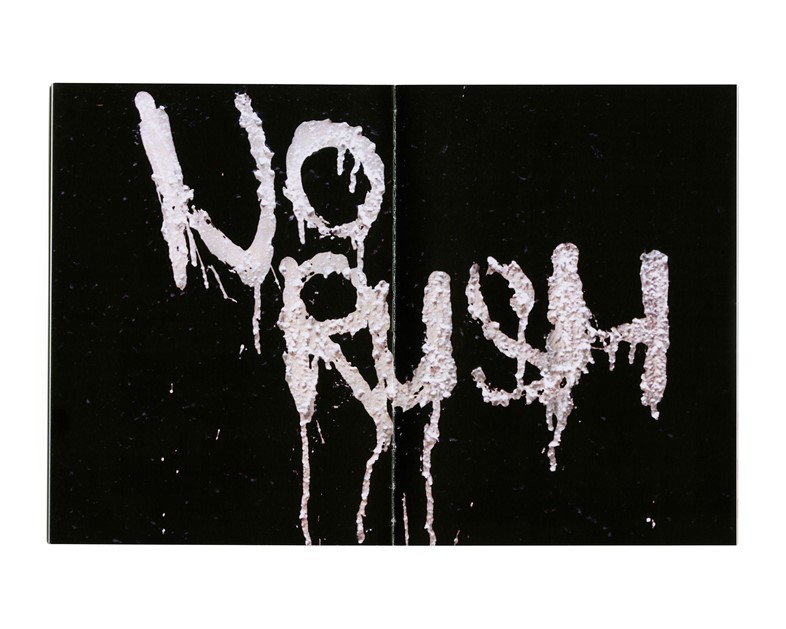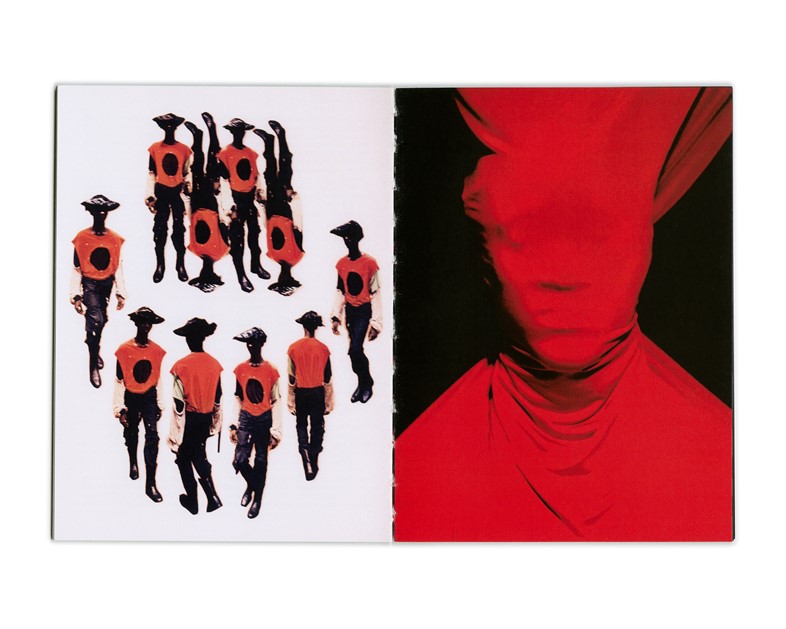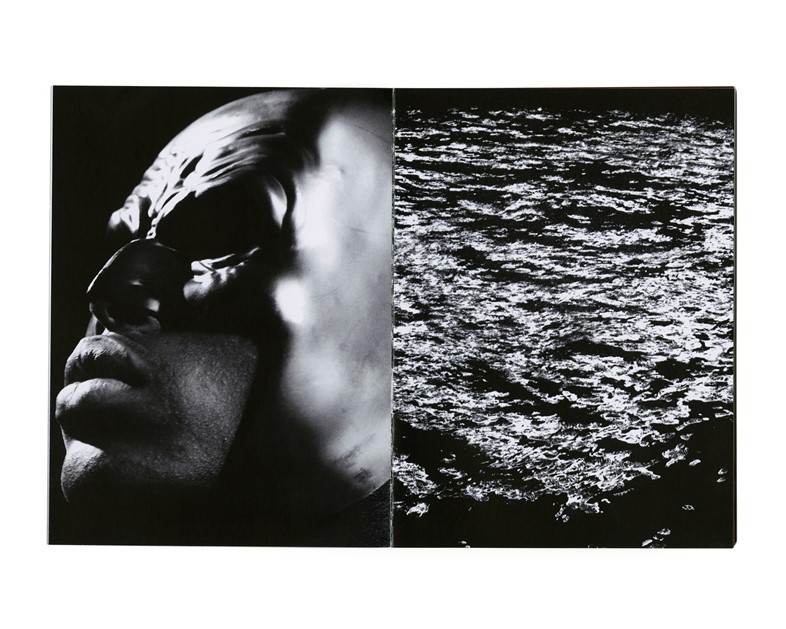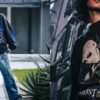
Rewrite
JJ Lorenzo and Jawara Alleyne: Sun as an Anchor6 Images
Jawara Alleyne has been busy. Earlier this year, the Cayman-born, London-based creative was given a shout-out by Rihanna, who called him his “new favourite designer”, and since then, it’s been kind of non-stop.
As well as creating his SS25 collection and debuting it at London Fashion Week last month, he’s become a go-to for the likes of Paloma Elsesser and Charli xcx, who have him on speed dial for custom red carpet and tour looks, and he’s also working on an upcoming exhibition, set to take place in the Cayman Islands sometime in 2025. But don’t think that’s the end of it: somehow, he’s also managed to fit in a book, which lands on shelves at Broadway Market’s Donlon Books this week.

Sun as an Anchor is a creative project realised alongside photographer JJ Lorenzo, which explores the sun beyond celestial body and examines how it shapes everyday life for people living in, and from, the Caribbean. Lorenzo’s emotive and intimate images depict the dichotomy of Alleyne’s life across the winter months, from the balmy days of December in the Cayman Islands, to the grey, gloomy days of January and February in the UK – when the sun all but disappears until the spring rolls around.
Across the limited edition book, hazy portraits of Alleyne are manipulated and skewed, giving the whole thing a dreamy, surreal effect. Various iterations of his work are captured by Lorenzo, too, with signature swathes of fabric documented on the mannequin midway through being brought to life, or otherwise on models, with Alleyne himself adding finishing touches on the body.

As the book gets its launch this evening (October 3), Lorenzo talks us through how the project came about, their mutual obsession with buying books, and being playful with the format.
How did you and Jawara meet?
JJ Lorenzo: We met through some good mutual friends in a park in Hackney. We live pretty close to each other, so it was easy to connect. We ended up chatting about shooting one of his lookbooks, and things just took off from there.
How do you gel, or not gel, creatively?
JJ Lorenzo: Creatively, it’s always been really smooth with Jawara. We’re friends, so there’s an ease when we work together – no pressure, just a natural flow. We both bring different strengths, and we complement each other really well, which makes the process feel balanced. There’s a playful energy to it too, which keeps things fresh and makes working together feel more like hanging out.
“I’ve always had a love for books – I’m constantly researching and digging through archives, and I love the idea of building my own library little by little. When I first visited Jawara’s place, I noticed right away that we had this shared passion for books” – JJ Lorenzo
How did the idea for the book come about? Why did you want to make it?
JJ Lorenzo: I’ve always had a love for books – I’m constantly researching and digging through archives, and I love the idea of building my own library little by little. When I first visited Jawara’s place, I noticed right away that we had this shared passion for books. From then on, it became a regular thing in our friendship to call each other about a new book or say things like, ‘Hey, I just picked this one up’. or ‘I saw this – want to come over and check it out?’ That back-and-forth sparked the idea of making a book together. It just felt like a natural step.
What was the process like?
JJ Lorenzo: We set out to document Jawara’s creative process and create a lasting record of it. His way of working is so tactile and visual that capturing it felt like the obvious thing to do. At the same time, we came up with this haiku concept—where each image is like its own little story. From there, the publication started to take shape. I was in and out of his studio, and everything just flowed naturally.

Do you have a favourite image and if so, why does it stand out for you?
JJ Lorenzo: That’s a tough question! If I had to choose, I’d say the back cover really stands out for me. There’s something poetic and theatrical about it that makes it special. The colours and motion capture the energy of this project perfectly.
What do you hope people take away from it?
JJ Lorenzo: I hope people see this book as a celebration of our ongoing collaboration. It’s also like a calling card, showing how our ideas and creativity come together.

in HTML format, including tags, to make it appealing and easy to read for Japanese-speaking readers aged 20 to 40 interested in fashion. Organize the content with appropriate headings and subheadings (h1, h2, h3, h4, h5, h6), translating all text, including headings, into Japanese. Retain any existing
tags from
JJ Lorenzo and Jawara Alleyne: Sun as an Anchor6 Images
Jawara Alleyne has been busy. Earlier this year, the Cayman-born, London-based creative was given a shout-out by Rihanna, who called him his “new favourite designer”, and since then, it’s been kind of non-stop.
As well as creating his SS25 collection and debuting it at London Fashion Week last month, he’s become a go-to for the likes of Paloma Elsesser and Charli xcx, who have him on speed dial for custom red carpet and tour looks, and he’s also working on an upcoming exhibition, set to take place in the Cayman Islands sometime in 2025. But don’t think that’s the end of it: somehow, he’s also managed to fit in a book, which lands on shelves at Broadway Market’s Donlon Books this week.

Sun as an Anchor is a creative project realised alongside photographer JJ Lorenzo, which explores the sun beyond celestial body and examines how it shapes everyday life for people living in, and from, the Caribbean. Lorenzo’s emotive and intimate images depict the dichotomy of Alleyne’s life across the winter months, from the balmy days of December in the Cayman Islands, to the grey, gloomy days of January and February in the UK – when the sun all but disappears until the spring rolls around.
Across the limited edition book, hazy portraits of Alleyne are manipulated and skewed, giving the whole thing a dreamy, surreal effect. Various iterations of his work are captured by Lorenzo, too, with signature swathes of fabric documented on the mannequin midway through being brought to life, or otherwise on models, with Alleyne himself adding finishing touches on the body.

As the book gets its launch this evening (October 3), Lorenzo talks us through how the project came about, their mutual obsession with buying books, and being playful with the format.
How did you and Jawara meet?
JJ Lorenzo: We met through some good mutual friends in a park in Hackney. We live pretty close to each other, so it was easy to connect. We ended up chatting about shooting one of his lookbooks, and things just took off from there.
How do you gel, or not gel, creatively?
JJ Lorenzo: Creatively, it’s always been really smooth with Jawara. We’re friends, so there’s an ease when we work together – no pressure, just a natural flow. We both bring different strengths, and we complement each other really well, which makes the process feel balanced. There’s a playful energy to it too, which keeps things fresh and makes working together feel more like hanging out.
“I’ve always had a love for books – I’m constantly researching and digging through archives, and I love the idea of building my own library little by little. When I first visited Jawara’s place, I noticed right away that we had this shared passion for books” – JJ Lorenzo
How did the idea for the book come about? Why did you want to make it?
JJ Lorenzo: I’ve always had a love for books – I’m constantly researching and digging through archives, and I love the idea of building my own library little by little. When I first visited Jawara’s place, I noticed right away that we had this shared passion for books. From then on, it became a regular thing in our friendship to call each other about a new book or say things like, ‘Hey, I just picked this one up’. or ‘I saw this – want to come over and check it out?’ That back-and-forth sparked the idea of making a book together. It just felt like a natural step.
What was the process like?
JJ Lorenzo: We set out to document Jawara’s creative process and create a lasting record of it. His way of working is so tactile and visual that capturing it felt like the obvious thing to do. At the same time, we came up with this haiku concept—where each image is like its own little story. From there, the publication started to take shape. I was in and out of his studio, and everything just flowed naturally.

Do you have a favourite image and if so, why does it stand out for you?
JJ Lorenzo: That’s a tough question! If I had to choose, I’d say the back cover really stands out for me. There’s something poetic and theatrical about it that makes it special. The colours and motion capture the energy of this project perfectly.
What do you hope people take away from it?
JJ Lorenzo: I hope people see this book as a celebration of our ongoing collaboration. It’s also like a calling card, showing how our ideas and creativity come together.

and integrate them seamlessly into the new content without adding new tags. Ensure the new content is fashion-related, written entirely in Japanese, and approximately 1500 words. Conclude with a “結論” section and a well-formatted “よくある質問” section. Avoid including an introduction or a note explaining the process.


